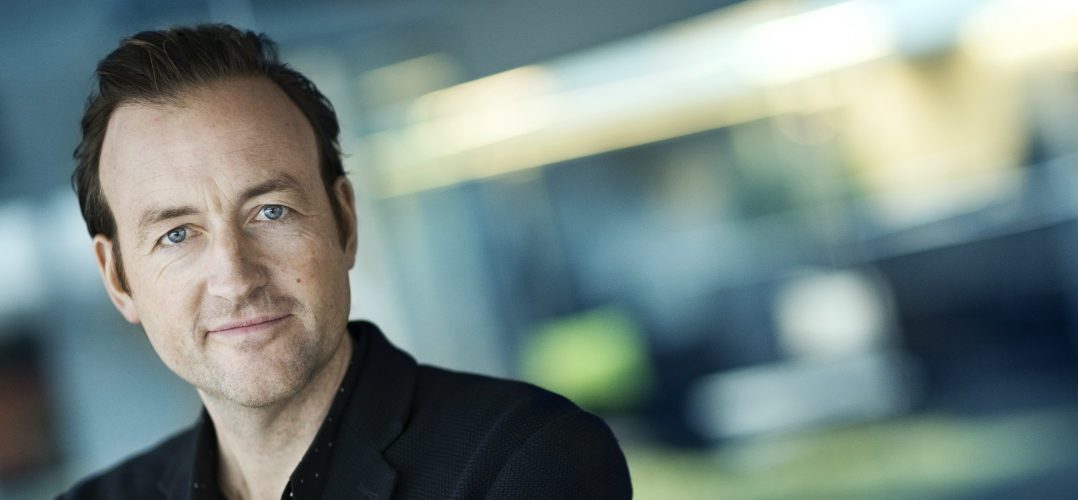TV 2 Networks manages Danish channels ZULU, CHARLIE and FRI, as well as TV 2’s VOD platform, TV 2 Play. The unit is part of TV 2 Denmark, a broadcast group owned by the Danish state. Main channel TV 2 is the most popular in Denmark and fulfils a public service remit, despite being operated on a commercial basis with some of its revenue also coming from subscription fees.
TV 2 Play is the catch-up and streaming service for the group’s portfolio of channels, offering both live streaming and on-demand access to the content from the main channels as well as access to original productions and exclusive acquisitions. Key local dramas on TV 2 include Lærkevej, Rita, Dicte and Badehotellet and the group is working on a number of new scripted properties as well as original short form content for its streaming service and social media outlets.
Guy Bisson: What do you see as the key trends in the content market at the moment, particularly with regard to scripted drama?
Sune Roland Jensen: We are seeing of course that drama and scripted is the top. It’s in a class of its own in terms of branding and views. But we are seeing that other channels are starting to work better and better because people are shifting their viewing from old school linear TV and subscriptions to cable TV to having their content delivered via a streaming service so we can see the user live and the viewer for more factual programming and the big entertainment shows is on the rise in our (streaming) platform. Even stuff like sport and news is being consumed live via the streaming platform. So people are cutting the cables slowly and starting to watch linear TV through the streaming platform. That‘s a big change, so live is definitely on the rise in all our statistics. It’s effecting our numbers in a very positive way.
So the numbers for scripted are stable, but the numbers for other types of content and genres is rising dramatically. So the cake is getting bigger from a streaming perspective. Which is nice because it’s getting bigger quicker than the linear distribution is dropping.
What’s interesting about viewing shifts is that linear viewing has dropped quite rapidly in the young demographics but is actually rising a little bit in the oldest demographics… For example, 50+ linear viewing has been rising 6% in the last half year whereas under 40 its dropping 12-15%. The average for our main channel which is 20-60 year olds is dropping at a kind of moderate speed. So you have two extremes and then one normal in the middle.
> To what extent is this driven by new SVoD platforms like Netflix and the competitive response of local players?
Netflix has definitely had an impact because they are very strong in Denmark, HBO has been picking up as well, but Netflix has introduced everyone to streaming so that is a great effect that they have had on the market. But now Netflix is levelling out and not rising anymore. Actually, HBO is rising, TV 2 Play is rising and Viaplay, our commercial competitor from MTG has been rising as well. But Netflix is rising much more slowly because it’s already in every third home.
What we can see with content is that some specific genres have success on streaming platforms. The bigger and higher concept it is the bigger the success on streaming whereas I see the more old school and more linear TV dramas…the airports and those kind of shows—are going to be in decline in the next couple of years. Then the big entertainment shows and the big social experiment shows are going to be on the rise. So I think what we are going to see is fewer programmes for bigger budgets and less of the middle—the glue that tied the slots together in the linear world.
Shows have to be load to cut through the noise these days.
> Are you making any plans around original content production for the TV 2 Play service?
We are and have been doing for the last year or so. What we have seen working is when we can tie a strong community via social media to a specific programme brand its performing incredibly well on Play. So we are emphasising short content that we may take from YouTube and moving it to our platform for the young demographics. We have a youth channel called TV2 Zulu targeted at 15-40 year olds and is very strong on comedy. So we can move a lot of that content from TV2 Zulu and we have a very strong Facebook page so we can introduce comedy shows via our social feeds and then we can move people from social to TV 2 Play and we’ve had huge success with that.
The last couple of examples (of shows that moved from social) we’ve been able to finance them via new subscriptions.
> What would you say have been the key developments with regard to local content in Scandinavia and its use on streaming/OTT platforms?
We are moving money from buying foreign scripted just for Play to actually making those comedy shorts. For example, last year, we bought the UK series Humans and we didn’t give it a linear presence so it was just exclusive to Play and it didn’t perform very well. So what we are doing is moving money from those kind of acquisitions to producing our own stuff because it pays back much better. What we found was we had to have for foreign scripted a linear presence and a marketing campaign in order to make it perform on Play. We have a very clear co-dependency for that kind of content between our linear channels and our streaming platform. But for local content we can create unique communities around it.
> Has it just been comedy that works like this?
Actually the last thing was a cooking show (with a comic twist). Comedy is a very important one, but we are experimenting with other genres. But the good thing about comic shorts is that usually the comedians have a big following.
> What are the challenges of making non-English-language drama and has the market potential of non-English language content changed in recent years?
For scripted as whole, the opportunities for co-production have risen so it’s much easier for us to find international co-production partners than it was five years ago, or maybe ten years ago. Also, we have big international players who would like to co-finance with us some of our local content…the big broad productions. We’re always discussing strategically should we change our partnership structure and should we go into partnership with bigger international players. So far, we’ve been wanting to finance primarily ourselves in order not to give Netflix the opportunity to have local Danish content on their platform in Denmark. But of course we are always looking at it and looking at if we should change our windowing structure so that they can get the second window…we consider it all the time, basically…because how much do we need their money? And how much would we want them to help finance our drama?
> I’ve heard mixed views on whether there is a scripted bubble right now, what’s your view?
I don’t think there is a bubble in terms of viewers and consumers. I think they would want even more shows. But there is definitely a supply and demand issue where there is only a certain number of people who actually stars in making scripted in a small country like Denmark, so we have to a big challenge to develop new talent in order to keep the supply chain high. The good think in Denmark is that now a lot of good creatives prefer making scripted series to features. So a lot of the talent in Denmark has moved from movies to series. Of course, the best of them are moving to Hollywood. So the challenge for us is to develop new talent and keep hold of it and make sure they work on our series not our competitors. Actually we changed our whole internal structure. I used to have a commissioning editor on our youth channel and another commissioning editor on my older channel but now we have centralised in one department so that all the ideas come into one department and then we can professionalise the way we make drama in order to achieve the ambition to achieve the best place for drama in Denmark.
> How has the production/co-production and rights market changed with the rise of SVoD?
Most of our big scripted drama we make for our main channel is performing well in Norway and Sweden too so most of our drama for the main channels is co-produced with sister channels in Norway and Sweden—TV 4 and TV 2 Norway — that’s a very important collaboration for us in order to reach the budgets. And, of course, we don’t have streaming services in those countries, so it’s OK for us that they buy those rights.
We can also see that the interest (in local drama) from the rest of the world is getting bigger. But the biggest interest is coming from the competitors that are also in our market…i.e. Netflix, Viaplay and HBO.
> Are you observing differences in the way producers want to do deals with SVoD players and what are those differences?
I think the whole production side of it…the indies…see it as a great opportunity to get new customers because we are in such a tight market…there is only four broadcast customers you can have as a production company, so they embrace that Netflix and HBO and others are talking about buying into Danish drama. The only problem is that they have hard terms with regard to rights. We have a rights structure where we give money back to the industry. They have a different model—they pay better…initially.
They keep everything (in perpetuity). Whereas we have to have agreements with local associations of actors and writers and it’s based on a very regulated model in order for them to get money back from our investments. To state it in black and white, Netflix is only in it for the money, whereas we have a more public service remit and we have an interest in keeping the whole supply chain in a healthy state… but that of course is seen from our perspective.
The previous interview features in the new report from Ampere Analysis — SVoD Content Strategies: The Drive for Originality. Download it here!




